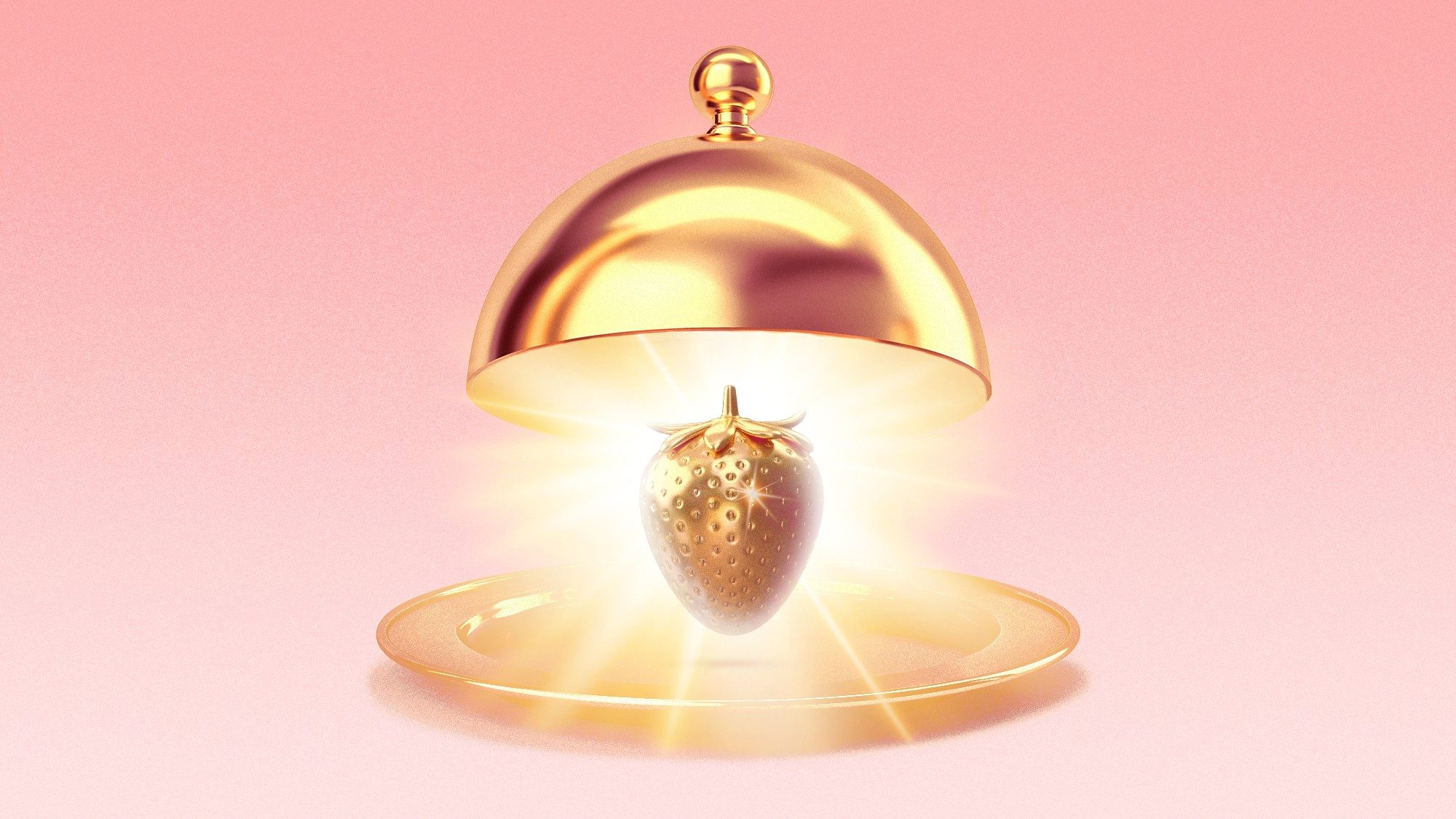For centuries, eggnog has been a part of America’s Christmas festivities. George Washington was rumored to have his own recipe, and the concoction was the catalyst of a riot at West Point in the wee hours of Christmas morning 1826. Today, the grocery chain Kroger sells nearly 3 million gallons of the drink each year.
But for a drink with so much tradition, eggnog has long divided Christmas tables. When BuzzFeed ran an article in 2016 titled “Eggnog Is Delicious and If You Disagree You’re Wrong,” it was paired with a missive the same day calling the drink “Absolute Garbage.” In 2017, when the Today show polled its audience about whether they liked eggnog, people were almost evenly split between those who thought it was disgusting and those who found it delicious. And these days, TikTok is laden with videos of people complaining about eggnog’s smell and taste—and with others mixing it into cereal and soda.
Growing up, I was never an eggnog lover. The premade, nonalcoholic version my parents would buy from the store wasn’t awful, but it wasn’t good, either. I felt obligated to gulp it down in the name of Christmas, but surely there had to be a better option. These days, eggnog has become my favorite Christmas treat. Everything changed when I discovered that a better eggnog is hiding in plain sight. It is called coquito. The creation, which is sometimes referred to as Puerto Rican eggnog, swaps the drink’s traditional base of cream and eggs for coconut milk and condensed milk. Puerto Ricans traditionally make the cocktail during the Christmas season, and then give some away to friends and neighbors. That’s how classic eggnog died for me: A few years back, a Puerto Rican family moved across the street from my parents and gave us a bottle of coquito. The drink looked and smelled like eggnog, but once it hit my tongue, I realized it was lighter, more flavorful, and just less weird. And yet, in mainland America, coquito remains a novelty. What if the problem with eggnog is just that many of us are drinking the wrong kind?
The fundamental deficiency with eggnog is, well, eggs. The drink’s raw eggs turn it into an easy vector for salmonella. That can make for a not-so-merry Christmas, leading to vomiting, diarrhea, and fever. If you’re old or immunocompromised, tainted eggnog can even be deadly. In the early 1980s, five seniors died after drinking homemade eggnog at a New Jersey nursing home.
I was determined not to land myself on the toilet this December when I decided to try a number of different eggnog recipes in the hopes of better understanding the most hated Christmas beverage. The exact ingredients vary, but at its core, eggnog is eggs, cream, milk, sugar, and, often, liquor (usually rum or whiskey) that are whisked together. The result, says Dan Pashman, the host of The Sporkful podcast, is more like “drinkable alcoholic cake” than a traditional cocktail. (An eggnog aficionado, he makes the Joy of Cooking recipe every year, which calls for 12 egg yolks, a pound of confectioners’ sugar, and two quarts of cream.)
But making homemade eggnog that’s safe is easier said than done. Most store-bought versions use pasteurized eggs, but I couldn’t find those at my local Trader Joe’s. Aging alcoholic eggnog in the fridge has also been proven to kill off the bacteria, but my brain would not allow me to accept that letting anything sit around for weeks could make it safer to consume. I found tempering the eggs to be the most tenable solution, but the process of heating the cream, slowly whisking it into a bowl of eggs, and then letting it cool before serving was one big, messy chore.
Eggs don’t just make the drink risky; they are also why so many people find eggnog unappealing. The texture of traditional versions is gloopy, closer to melted ice cream than anything else. Chefs have attempted to remedy this by whipping the egg whites to add some airiness, but even then, the result is plenty thick. Then there’s the flavor of eggnog. James Briscione, a chef and co-author of The Flavor Matrix, told me that most of the flavor from classic eggnog comes from the rum, because cream and eggs “are both relatively flavor-neutral.” Although people with a discerning palate might savor the caramel notes imparted on the rum from barrel aging, all I tasted was booze and dairy. Store-bought eggnog solves this flavor deficit through an extraordinary amount of sugar and spices, perhaps why more than one online commentator has compared it to cough medicine.
Either way, there is a better way to sip a creamy alcoholic drink that actually tastes like something without having to resort to saccharine premade nog. Instead of searching for the subtle coconutty notes in eggnog, coquito puts the aroma front and center. And the drink’s main ingredients, coconut milk and rum, go perfectly together. “The fruity esters and tropical notes that are coming from a coconut fit really well with those Maillard flavors—the toasting and roasting—that you see particularly in rum,” Briscione said.
Coquito has none of eggnog’s problems. The drink doesn’t need eggs to be luxurious; it achieves that texture through the inclusion of sweet, sticky condensed milk. (Some recipes also call for evaporated milk and cream of coconut, which results in a drink that’s even more luscious.) And it’s remarkably easy to make. When I made the drink earlier this month, I cut my finger opening a can of condensed milk and then dropped a spoon into the blender in a fit of pain-induced negligence. But the recipe still took only five minutes to complete. One classic-eggnog recipe I made, which involved separating out the yolks and egg whites, took three times as long, even without the same mishaps.
It might seem odd to adopt a Caribbean cocktail for the holidays if you don’t already live in the tropics. Coconut and rum seem more apt for sunbathing by the pool (hello, piña coladas!), than gathering around a Christmas fire. But don’t let that scare you. The coconut is subtle and balanced with a festive dash of cinnamon. If you crave a cocktail apt for sweater weather, coquito still fits the bill.
Christmas is a holiday of tradition: The decorations, the food, and the familiar rituals tend to stay the same. Even the movie selections don’t change much year to year, despite the fact that so many of us already know the dangers of a Red Ryder BB gun, and that “every time a bell rings, an angel gets his wings.” But the holiday isn’t actually as static as it seems. More than a century ago, goose was served at Christmas dinner. Now turkey is a staple. The candles that used to illuminate Christmas trees have thankfully been replaced by electric lights. And hardly anyone makes figgy pudding anymore, despite whatever “We Wish You a Merry Christmas” says. The core spirits of these centuries-long traditions still exist; they’ve just been updated for modern times. It’s time for eggnog to get an upgrade too.




